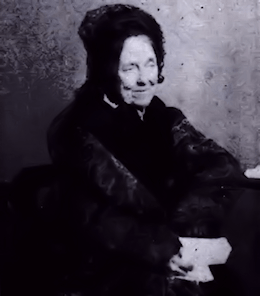Textus Receptus Bibles
Julia E. Smith Translation 1876
| 15:1 | The burden of Moab. For in the night the city of Moab was destroyed, perishing; for in the night the wall of Moab was destroyed, perishing. |
| 15:2 | He went up to the house and to Dibon, the heights, to weep: over Nebo and Medeba shall Moab wail: upon all their heads baldness; every beard cut off. |
| 15:3 | And in their places without they girded themselves with sackcloth: upon her roofs and in her streets every one shall wail, going down into weeping. |
| 15:4 | And Heshbon shall cry and Elealah; even to Jahaz their voice was heard: for this the loins of Moab shall make a loud noise his soul shall be evil to him. |
| 15:5 | My heart shall cry out for Moab; passing through even to Zoar, a heifer of three years: for going up to Luhith with weeping shall they go up into it: for the way of Horonaim they shall rouse up a cry of breaking. |
| 15:6 | For the waters of Nimrim shall be desolation; for the grass dried up, the herbage failed; there was no green. |
| 15:7 | For this the abundance made and their wealth upon the torrent of the Arabians shall they lift them up. |
| 15:8 | For the cry surrounded the bound of Moab, its wailing even to Eglaim, and its wailing to the well of Elim. |
| 15:9 | For the waters of Dimon were filled with blood: I will put additions upon Dimon, to the escaping of Moab, lions, and to the rest of the land. |

Julia E. Smith Translation 1876
The Julia Evelina Smith Parker Translation is considered the first complete translation of the Bible into English by a woman. The Bible was titled The Holy Bible: Containing the Old and New Testaments; Translated Literally from the Original Tongues, and was published in 1876.
Julia Smith, of Glastonbury, Connecticut had a working knowledge of Latin, Greek and Hebrew. Her father had been a Congregationalist minister before he became a lawyer. Having read the Bible in its original languages, she set about creating her own translation, which she completed in 1855, after a number of drafts. The work is a strictly literal rendering, always translating a Greek or Hebrew word with the same word wherever possible. Smith accomplished this work on her own in the span of eight years (1847 to 1855). She had sought out no help in the venture, even writing, "I do not see that anybody can know more about it than I do." Smith's insistence on complete literalness, plus an effort to translate each original word with the same English word, combined with an odd notion of Hebrew tenses (often translating the Hebrew imperfect tense with the English future) results in a translation that is mechanical and often nonsensical. However, such a translation if overly literal might be valuable to consult in checking the meaning of some individual verse. One notable feature of this translation was the prominent use of the Divine Name, Jehovah, throughout the Old Testament of this Bible version.
In 1876, at 84 years of age some 21 years after completing her work, she finally sought publication. The publication costs ($4,000) were personally funded by Julia and her sister Abby Smith. The 1,000 copies printed were offered for $2.50 each, but her household auction in 1884 sold about 50 remaining copies.
The translation fell into obscurity as it was for the most part too literal and lacked any flow. For example, Jer. 22:23 was given as follows: "Thou dwelling in Lebanon, building as nest in the cedars, how being compassionated in pangs coming to thee the pain as in her bringing forth." However, the translation was the only Contemporary English translation out of the original languages available to English readers until the publication of The British Revised Version in 1881-1894.(The New testament was published in 1881, the Old in 1884, and the Apocrypha in 1894.) This makes it an invaluable Bible for its period.